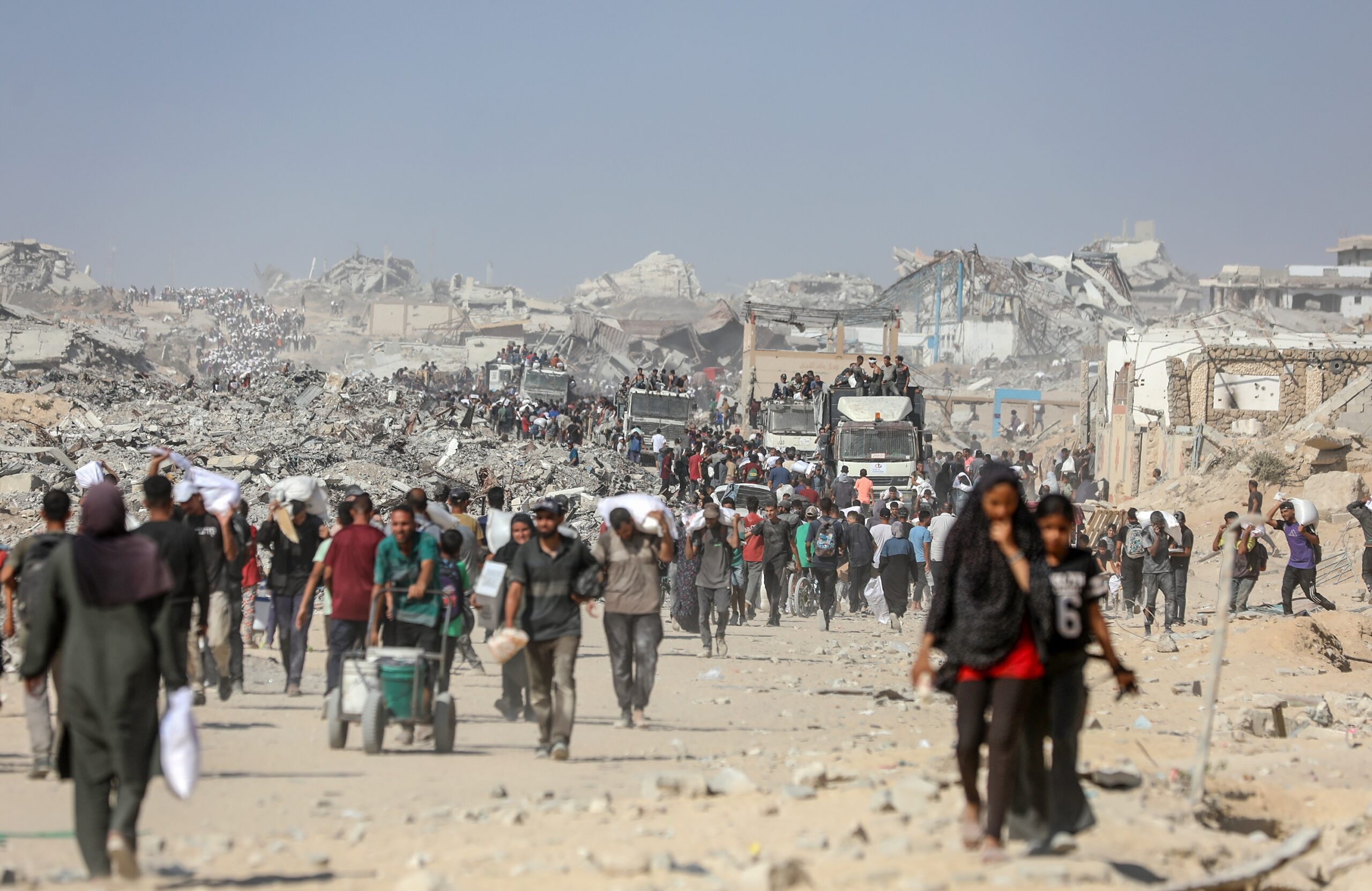International Women’s Day 2019 provides the opportunity to reflect on and engage in what has been achieved in the Women, Peace and Security agenda. While much has been achieved, there is still a long way to go to address systemic gender inequality and to expand women’s representation into positions where they can work to improve global peace and security.
“The confines of the battlefield are not what they once were. What once was the domain of a combat soldier is now the realm of women in all positions” Margaret Twomey, Former High Commissioner to Fiji and Timor-Leste (February 13, Canberra)
On International Women’s Day 2019, we look forward to the 20th anniversary of the Security Council Resolution 1325 on Women, Peace and Security (WPS). This penultimate year to the anniversary is an important time to stop and engage with what has been achieved in the WPS agenda and where action needs to be taken further. It is an important time to be creative. To look at the issues, institutions, and locations where WPS could improve international peace and security. Over twenty years since the landmark UNSCR 1325 various initiatives have been dedicated to advancing the agenda that aims to address and give voice to the different experiences and impacts of conflict on women. The agenda has achieved this progress whilst navigating international systems that were not created to ensure equal representation and participation.
WPS actively engages with political and economic institutions in order to transform gender power relations – the very institutions that have marginalised women’s representation and livelihoods for decades. It has its roots in anti-war women’s movements whereas the agenda now promotes gender mainstreaming in militaries and peacekeeping missions. How do we make sense of these paradoxes as well as the progress in WPS? How do we recognise the turf wars, the resourcing shortfalls, the politics and the regionalism while still pursuing an inclusive, progressive global agenda? How do we act in ways that ensures WPS is heard in the halls of power, but not at the cost of ignoring those from Kiribati, Sittwe and Tripoli, for example, who cannot travel to New York or Geneva?
The Oxford Handbook on WPS, a collaboration of 93 practitioners and scholars, was inspired by discussions taking place around the world about the promise of women’s representation in peace and security institutions. What struck us was that advocates, whether in Mosul, Bogota, or Beirut, were aware of the unequal progress of the four pillars attached to the Security Council thematic agenda but that did not deter or stop their advocacy and belief in Resolution 1325. They are mobilizing, advocating, researching and meeting where they can in their conflict-affected cities and villages. Compromise and pragmatism are the two words that often come up in discussions with these advocates. So, how do we build an evidence-based argument around their success?
Despite being more than 50 percent of the world’s population, the proportion of women in national parliament remains below 25 percent globally, only 8 percent of peace negotiators between 1990 – 2017 were women; between 24 – 31 percent were female heads of delegations at international climate summits and despite an increase of women in the Australian Defense Force, it remains below 17 percent with no female representation on the primary defense decision-making committee. The onus has been on the WPS scholars and experts to prove that women’s presence will make a difference to national and international peace and security. Yet what evidence is there that neglecting women makes a peaceful and secure world? This was ours and our authors’ ambition for the Handbook. To present, across its 67 chapters, the evidence, the advocacy and the concrete engagement in country situations where women’s representation improves the security of communities and all their members every day.
One book won’t solve or answer the major challenges to realising peace and security, and women’s security in particular. There are tragic failures of atrocity prevention and peacemaking in Syria, Yemen, Myanmar, the Congo, and South Sudan, just to mention possibly the worst situations. But we must not give in to the temptation that nothing can be done or could have been done. We know that failure to address systemic gender inequality heightens ethnic nationalist conflicts, terrorism, genocide and human rights abuses.
There are lessons to be learned and heeded. Innovation is occurring within the WPS agenda, especially where local women and traditional security practitioners engage in joint problem-solving with peace and security institutions. Ensuring the flexibility of frameworks so that WPS strategies can respond to local situations is vital. This understanding comes from consultation with and recognition of local women, not donors. Chapters in the Handbook highlight numerous examples of such innovations including firewood patrols with women, women’s community policing in displaced camps, assistance with grant writing for women civil society organizations, and independent (non-government controlled) radio communication to rural areas such as in remote Pacific Islands where women’s only access to the outside world is via radio.
There is a paradox in that militaries appear to be taking up the knowledge and the lessons of WPS operationally as much, if not more, than government diplomacy and development agencies. Change is happening at all levels and across many institutions – even the most masculine of institutions. Defence sector investment in the WPS agenda can lead to institutional transformation rather than mere co-optation by militarism. It can be an opportunity to reform military practices, military agendas and definitions of peace and security within countries and within regions. Handbook chapters on North Atlantic Treaty Organisation (NATO), the Chinese peacekeeping force, international policing deployments and the Australian Defence Force highlight the positive change within security sector culture and practices as a result of the investment in WPS.
Different entry points for WPS are necessary for different regions – there is no one size that fits all. What the WPS agenda is doing will differ by degrees and progress in any given country or region. That is the reality. This does not mean we cling to all or nothing. In our region, for example, there are distinct issues and approaches. In Asia, establishing normative change and networks at the regional level is vital – the recent establishment of the ASEAN women and peace registry provides a positive example. In the Pacific, the gender-responsive approach to climate change is intimately linked to the WPS agenda. All these approaches will change and adapt in the context of local women’s empowerment, women’s agendas and local conflicts. Efforts are currently underway in the Pacific to equip women and girls with the necessary skills to prepare for disasters and to ensure they are included in disaster risk reduction and response planning. Women have always been first responders in the region, but now they are decision makers and changing traditional narratives of security that have been embedded in social and cultural practices for generations.
The “security” of WPS must be emancipated. We need to recognise that it’s not only civil wars, terrorism and violent extremism that threaten peace and security. But also the slower onset of natural disasters, mass migration, and resource scarcity that can play a huge role in the progression towards political instability and insecurity. Climate change and natural disasters are no longer emerging issues – population movements into already crowded areas and access to resources are definite threats to people globally. Displaced populations, by war or environmental degradation, face similar challenges and in almost all cases carry the burden and challenges of being marginalized groups, including women and girls. Their right to empowerment is the next challenge for the WPS agenda.
While it has taken more than a century to generate recognition for WPS, there is no looking back. The antidote to the risks of geopolitical stalemate, populism and isolationism is to recognize and support the strength and resilience of women as equal peace and security actors. To include them as equal partners, not because of what they deliver but because they have a right to be at every level – including the battlefield, the elite peace table, and high-level climate policy forums – to ensure sustainable and transformative change that reaches back to communities, whether they are facing displacement, resource scarcity or physical insecurity.
Betty Barkha is a PhD candidate at the Monash Centre for Gender, Peace & Security.
Dr Sara E Davies is an Australian Research Council future fellow and associate professor, Centre for Governance and Public Policy, School of Government and International Relations, Griffith University. She is also an adjunct associate professor, School of Social Sciences, Monash University.
Jacqui True is a professor of politics & International Relations and an Australian Research Council future fellow at Monash University, Australia. She is also director of the Monash Centre for Gender, Peace and Security.
This article is published under a Creative Commons License and may be republished with attribution.




